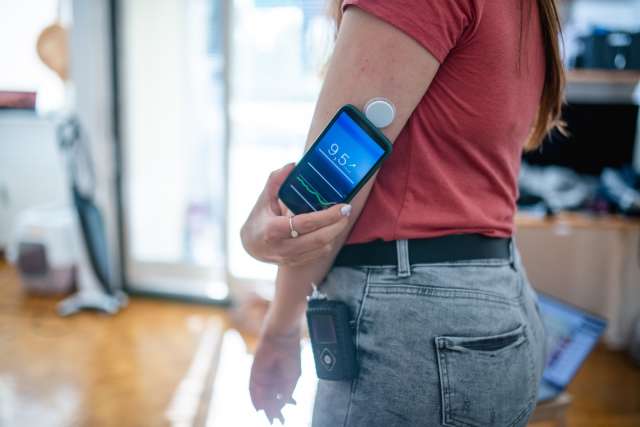FINDINGS
While use of insulin pumps to manage type 1 diabetes has grown over 20 years, there has been no improvement in racial, ethnic, and socioeconomic disparities in their use. By the end of the period studied, insulin pump use was 67% among non-Hispanic whites, 41% among Hispanics, 29% among Blacks, and 46% among other racial and ethnic groups. In addition, 70% of people with bachelor’s degrees or higher used the pumps, compared with 56% among those with some college, 40% among holders of high school degrees, and 18% among those with no high school education. By income level, 74% of those with household incomes of $75,000 or more, 66% with $50,000 to 74,999, 51% with $25,000 to $49,999, and 41% with less than $25,000, used the pumps.
BACKGROUND
Insulin pump use has been shown to lead to improvements in glycemic control, quality of life, satisfaction with treatment, and lower diabetes distress. Overall use has grown over two decades from about 32% to 59% among people with type 1 diabetes.
METHOD
The researchers examined data from the SEARCH for Diabetes Youth Study, a multicenter, observational, and population-based study of youth under 20 years of age. They broke up the analysis across four time periods between 2001 and 2019: 690 youth and young adults with type 1 diabetes in 2001-2005, 1,706 in 2006-2010, 2,385 in 2011-2015, and 2,257 in 2016-2019.
IMPACT
Research is needed on ways to improve access to insulin pumps and address persistent inequities in use of the devices, which are known to improve health and quality of life for people with type 1 diabetes.
COMMENT
“Diabetes technology has numerous benefits for patients with type 1 diabetes, but the problem is that there is a huge divide in who actually has access to these technologies,” said study lead Dr. Estelle Everett, assistant professor of medicine in the division of endocrinology, diabetes & metabolism at the David Geffen School of Medicine at UCLA. “Our study found that over the past 20 years, despite the overall increase in the use of insulin pumps, racial-ethnic minority groups and those of lower socioeconomic status still have unequal access to this very beneficial management tool. This is very concerning because these groups have more challenges managing their diabetes and have higher risk of complications with diabetes, so they may actually gain the most benefit from diabetes technology use. Changes in the approach to diabetes care and health policies are needed to ensure equal access to this life changing diabetes device because everyone deserves an equal opportunity to improve their diabetes health.”
AUTHORS
Additional co-authors are Lauren Wisk of UCLA; Davene Wright of Harvard University; Adrienne Williams of DNA Solutions LLC; Jasmin Divers of New York University; Dr. Catherine Pihoker and Dr. Jason Mendoza of University of Washington; Angela Liese of University of South Carolina; Anna Bellatorre of University of Colorado; Dr. Anna Kahkoska and Elizabeth Mayer-Davis of University of North Carolina at Chapel Hill; and Ronny Bell of Wake Forest University.
JOURNAL
The is published in Diabetes Technology & Therapeutics.
FUNDING
The SEARCH for Diabetes in Youth Cohort Study (1R01DK127208-01 and 1UC4DK108173) is funded by the National Institutes of Health, National Institute of Diabetes and Digestive and Kidney Diseases and supported by the Centers for Disease Control and Prevention. The Population Based Registry of Diabetes in Youth Study (1U18DP006131, U18DP006133, U18DP006134, U18DP006136, U18DP006138, and U18DP006139) is funded by the Centers for Disease Control and Prevention (DP-15-002) and supported by the National Institutes of Health, National Institute of Diabetes and Digestive and Kidney Diseases.




